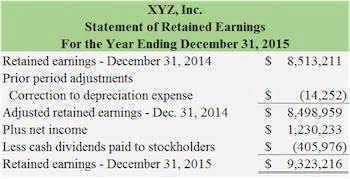- Acelerador financeiro
- Activity
- Add a Listing
- Add a Listing
- All elementor widgets
- Baixe já o aplicativo GIANTS
- Blog
- Blog
- Bruno Andrade
- busca
- Carrinho
- Checkout
- Checkout
- Claim listing
- Cris Arcangeli
- Dener Lippert
- E
- Espaço Acelerador
- Eugenio Pachelli
- Explore
- Explore
- Explore (2 columns)
- Explore (3 columns)
- Explore 2
- Explore 3
- Explore Alternate
- Explore classic
- Explore No map
- Finalizar compra
- Flavio Augusto
- Giants
- Giants oficial
- Gilberto Augusto
- Gilberto Mautner
- Heloisa Capelas
- Home
- Israel Salmen
- Janguiê Diniz
- João Appolinario
- João Kepler
- Loja
- Manoel Carlos
- Marcus Marques
- Members
- Minha conta
- My account
- My account
- Página de exemplo
- Porsche Cup
- Rafa Rossi
- Reinaldo Zanon
- Renan Kaminski
- Ricardo Nunes
- Sample Page
- Sandro Magaldi
- Shop
- Shop
- Tiago Brunet
- Tiago Nigro
- Wendell Carvalho
Accounts Receivable AR Automation Software

This should mean the business gets paid more quickly, while also improving the experience for the client. Effectively addressing these challenges is crucial for a well-functioning accounts receivable department. In the following section, we’ll dive into top-performing AR automation solutions and share their respective pros and cons. If you’re evaluating AR automation solutions, be sure to consider your unique pain points before finalizing your decision. It supports various functions such as creating and distributing invoices, processing payments, sending payment reminders, reconciling accounts, and analyzing AR data.
Improve Your Customer Experience.
By standardizing the invoicing process, you minimize the opportunity for mistakes, and ensure that every invoice is accurate and gets sent to your customer on time. Plus, it frees your team up to focus their efforts on strategic aspects of your business, instead of getting overwhelmed with tedious manual tasks. There are countless tools, apps and software out there that offer automation features. Accounts payable is money a business owes to suppliers for goods or services purchased. This step can be complicated by factors like missing remittance advice or discrepancies between payment information and open invoices.
- They likely can offer you the greatest insight into which capabilities will deliver the fastest return on investment (ROI) or capture the interest of your customer base.
- By implementing AR automation tools, teams can significantly improve their workflow, ensuring faster and more reliable management of receivables.
- Embracing AR automation is not just a technological upgrade; it’s a transformative step towards a future-ready, digitally empowered financial ecosystem.
- Fundamentally, accounts receivable automation works by using technology to automate the simplest elements of the accounts receivable process, including invoicing, payment collections, and reconciliation.
- Next, link your new AR platform with your existing tools, such as Quickbooks or Xero.
Improve AR accuracy

Upflow for instance automatically gets payment information from your billing tool or payment gateway. When you automate your accounts receivable, you can rest assured that the numbers you have are the correct ones. You’ve got peace of mind, allowing you to make better business decisions in the long run. Accounts Receivable automation supports your AR and has many key benefits, automating your most repetitive tasks and ensuring you have all the info you need at your fingertips. Next, link your new AR platform with your existing tools, such as Quickbooks or Xero. Ideally, your platform will make it easy to sync your accounts, so all of your tools can share information with each other and ensure accurate record-keeping.

Automate your account receivables today
The first advantage of using automation for your accounts receivable is that you always know where you stand. Accounts receivable automation is done with a tool, either with software you download or with a SaaS (Software as a Service, that you access online). Consider factors like integration capabilities with your current tools, the features you need, pricing, ease of use, and available support and training.

In this practical guide, we’ll walk you through the accounts receivable automation accounts receivable process step-by-step. To make implementation easier, we’ll also offer free, downloadable templates tailored for this crucial financial process. The big takeaway here is that accounts receivable automation exists to automate and simplify the processes that don’t necessarily need to be manual. It should still give you the flexibility to keep high-value work as manual as you want or need it to be, during sensitive phases like the onboarding for example. Taking a look back, finance teams were often times previously perceived to be a support function. Accounting took place in the background or in parallel to regular business activities.
Step 5B: Payment Processing
While it’s tempting to keep your deciding committee small to make fast decisions (we’re all Accounting Periods and Methods for that), it’s also important to ask other people to join in on your AR process. Knowing your pain points will help define your needs – and help you choose what matters to you in AR software. Once you know where you stand now, you can look into how you’d like your process to improve for the future. That’s especially handy if you want to use the most accurate formula to calculate your DSO, but you don’t want to spend the time doing so. You decide how much automation you want in your process, and you can have more personalized exchanges with your client’s thanks to it.
How to automate AR processes
Most importantly, your automated AR platform can integrate with other software, like QuickBooks, Xero, and NetSuite, so you can sync information across multiple platforms and maintain a centralized record of your cash flow. Accounts receivable automation, or AR automation, uses software to automate tasks related to collecting funds owed to the business. Corcentric EIPP is delivered as a managed service offering to streamline set-up, onboarding, and management. Accounts receivable turnover is calculated by dividing the net credit sales by the average accounts receivable during a specific period.

Manual accounts receivable processes wrack up unnecessary costs and errors for businesses. Read on to learn the most common AR challenges and how automating your AR processes can help. Small businesses can manage accounts receivable by issuing invoices promptly, setting clear payment terms, actively pursuing collections, https://www.bookstime.com/ and regularly reviewing key performance metrics.
- Unfortunately, many AR teams today rely on legacy tools and disparate systems like spreadsheets, ERP, basic billing, and accounting systems.
- These systems prioritize data protection through regular security audits and real-time monitoring to safeguard sensitive financial information.
- While traditional methods have their merits, modern automation offers a plethora of advantages that can dramatically improve efficiency and accuracy.
- A study by Forbes, found that around 75% of companies reported having less than two months of operating cash at their disposal.
- Adopting AR automation is critical for the financial health of your business by improving cash flow and enhancing profitability.
- Note that although lockbox services eliminate the need for you to receive checks at your office, they don’t take away the effort involved in processing them.
- Having few customers with bad creditworthiness and track record or history on board can disrupt the entire AR management and cash flow of a company.
- If we break down the accounts receivable process cycle even further, it involves 8 steps listed below.
- All you need to do is add them to invoices or – if you choose to use an automated accounts receivable tool – add the account details to the payment terms and your customer can make a local payment in their preferred currency.
- Some other factors to consider are price, whether or not the platform offers tutorials or an onboarding process, and which other platforms it integrates with.
- You should also pay attention to the scope of the KPIs, i.e. if you can zoom in and out on your metrics.
In this article, we’ll further explore AR automation, including how it works, how it improves accounts receivable, the components of AR automation, the advantages of AR automation, and what a practical solution looks like. To realize the full potential of automation and get the above-mentioned benefits businesses need to choose and implement the right AR software. Today, there’s an array of software solutions available for AR automation that are designed to streamline financial operations.